But also in recent months I have witnessed how dreadfully people get what is a real basic, cheap, fool proof concept monumentally wrong presumably working on the premise more is always better , the reality is less is more in this case. Even some dealers that design ponds for customers get it wrong trust me I have seen some right horror stories where there is that much matting stacked on top of one another it turns in to a giant koi poop strainer the knock on effect of this is you get water tracking as the rest blocks up and koi poop gets calcified
So what is the wrong way?
If you have it installed in either of the following configuration trust me you spent to much money on Japanese matting and are not getting the bio capacity of half this amount configured correctly
First the side draft system with vertical non spaced sheets
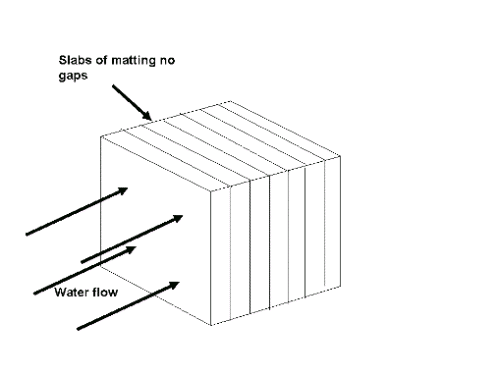
Next the updraft system with sheets stacked directly on one another with no spacing
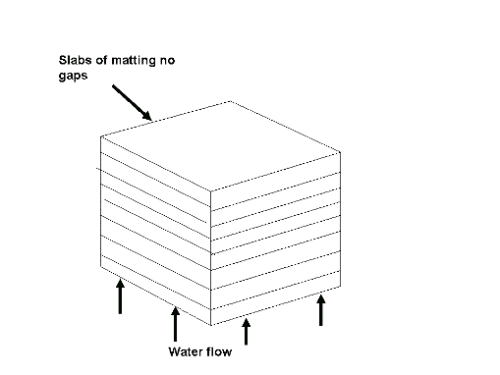
Both of these systems earned the dealers extra cash (selling more matting than was required) and these finished units styled this way are themselves anaerobic power houses Giant turd traps and really not what’s required
Before we see how it should be made:
Pete Waddington bought Japanese matting to the UK it worked then and still works great now if you follow some basics
The cartridge when made must have square void spaces these are as important as the matting itself and is what makes it function
After initial settlement chambers most people still have suspended fines/particulates travelling through the bio system you don’t want these getting trapped and blocking the biological section with K1 this does not happen and when a Japanese matting cartridge is made right it does not/should not happen with J matting
The rule is what does not settle out in the settlement chamber you want it to go on right through the system where it hopefully will settle out next time it enters the settlement chamber hopefully we don’t use bio media for settlement
There are two grades of Japanese matting 35mm and 40mm as far as I know there is no difference in bio mass but which ever you employ be it 35 or 40 remember the voids should be 40 or 35 mm square so if we were using 40 mm looking down on the cartridge from the top every thing should measure 40mm the exposed sheet will obviously be 40mm the voids and upright spacers should measure 40mm square. The cartridge itself should be no more than 10 -12” deep
The original cartridges were made by interlocking the sheets, so you had to end up with everything measuring the overall thickness of the sheet
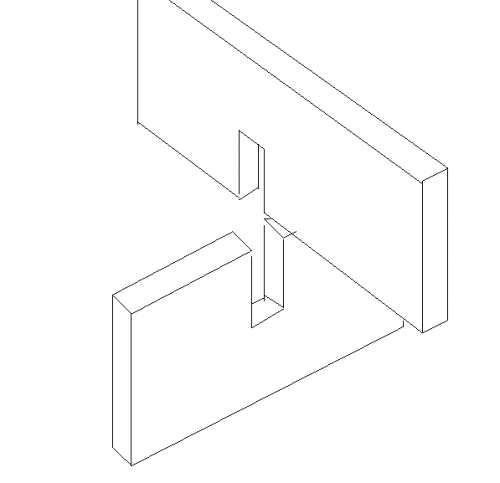
Below the traditional cartridge configuration
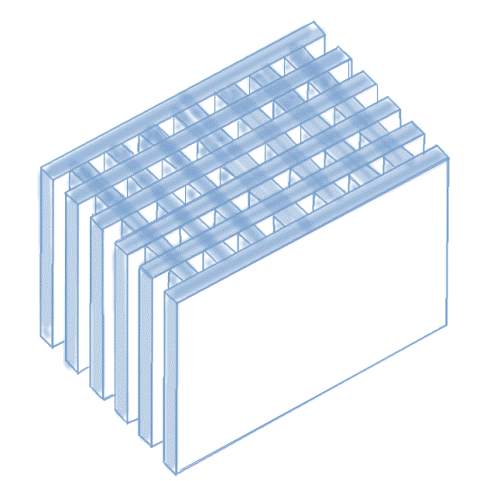
As stated the most important part is the void spaces without these the system does not function
The water obviously comes up fast through the voids , this has two important effects
First any remaining suspended particles get drawn to the faster current so they pass unhindered on the way back into the pond to hopefully settle out next time
Next the faster water travelling up creates a kind of vacuum or suction behind it this creates a slower flow THROUGH the matting and this water percolates up through the matting being treated by nitrifying bacteria as it goes
The following drawings should explain it better than I
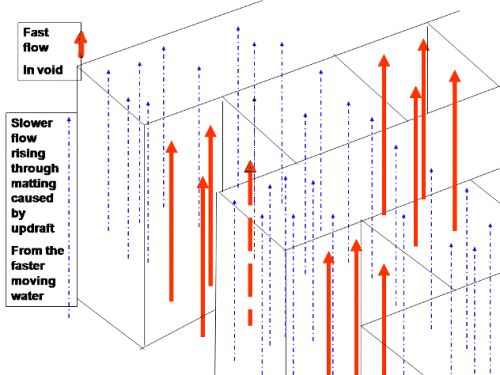
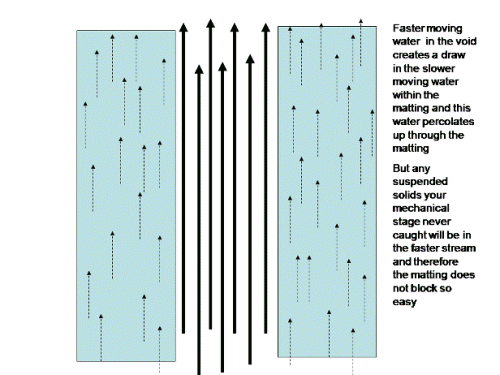
This is basic engineering based on the fluid dynamics and utilising an updraft system
Last but not least don’t try to make a giant long updraft system figuring more is better again because as you will see from the next examples all that happens is the water will take the path of least resistance and go up through the first ¼ of the length leaving ¾ of the Bio stage redundant
So based on the principle of water will always find its own level ( again fluid dynamics ) we make the water travel where we want it to go buy blocking its path and creating weirs and up and over sections to utilise every square inch of surface area
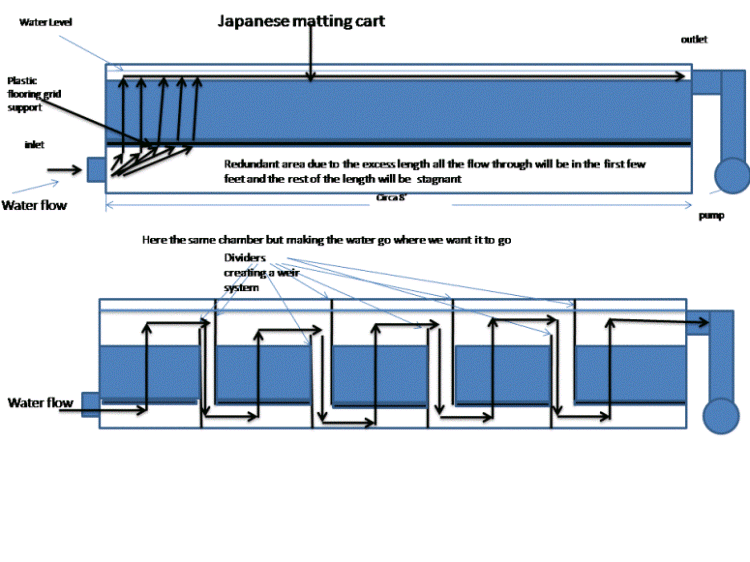
So if you want to avoid this
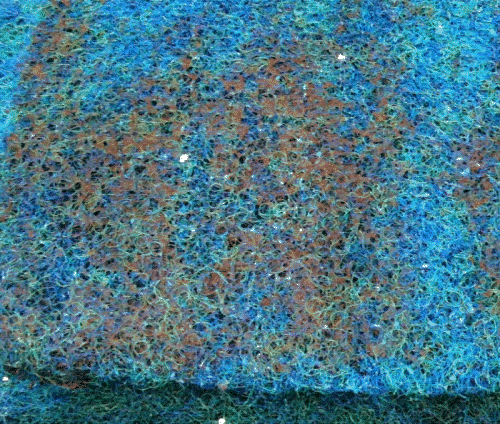
Don’t do this XXX
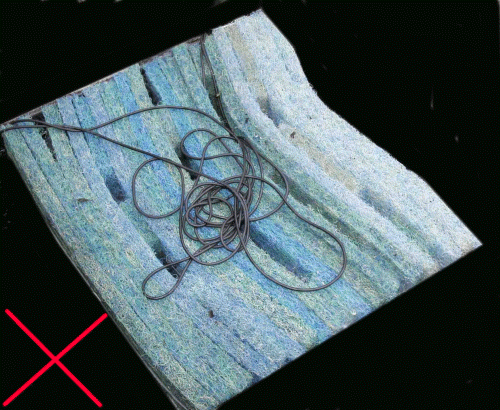
Do this and get better bio filtration





